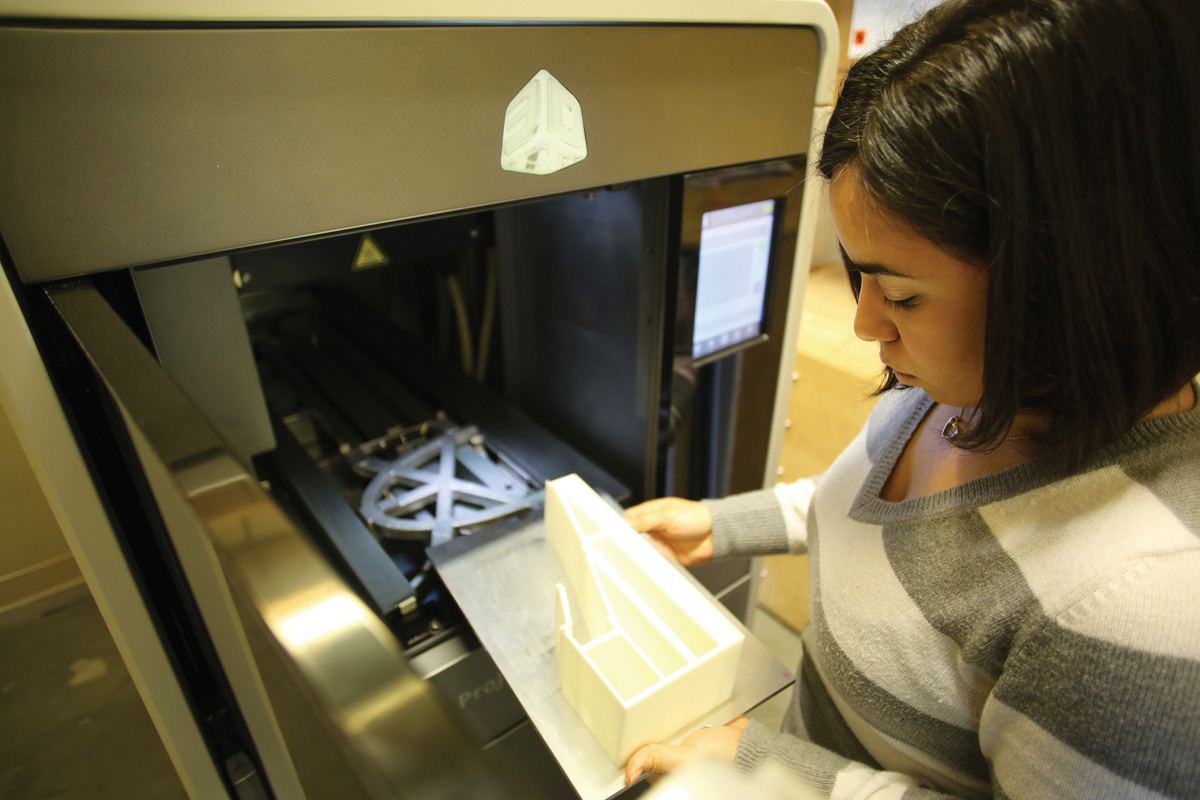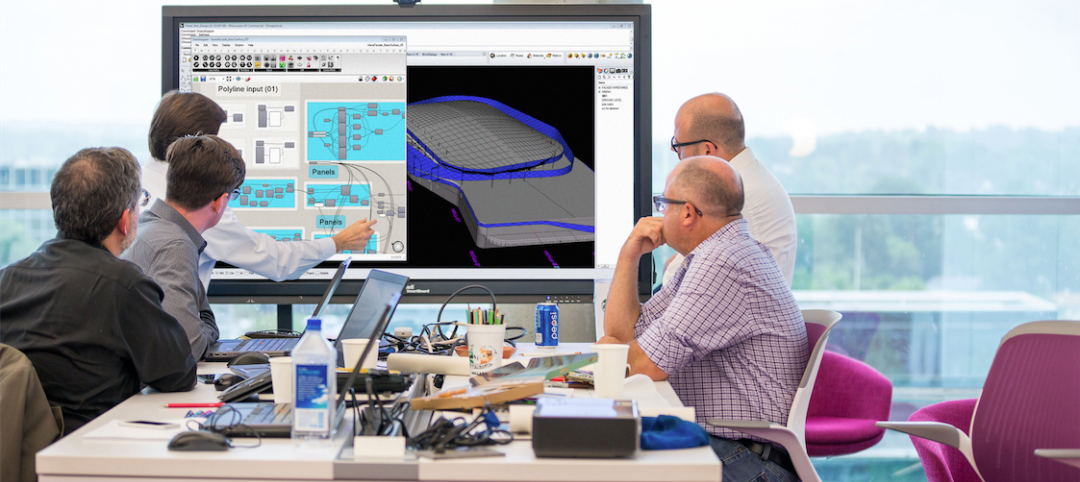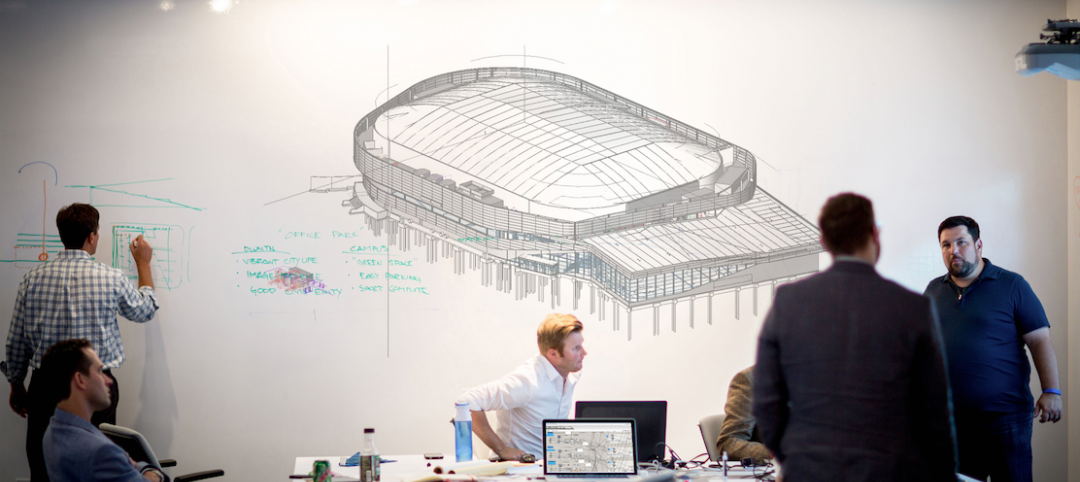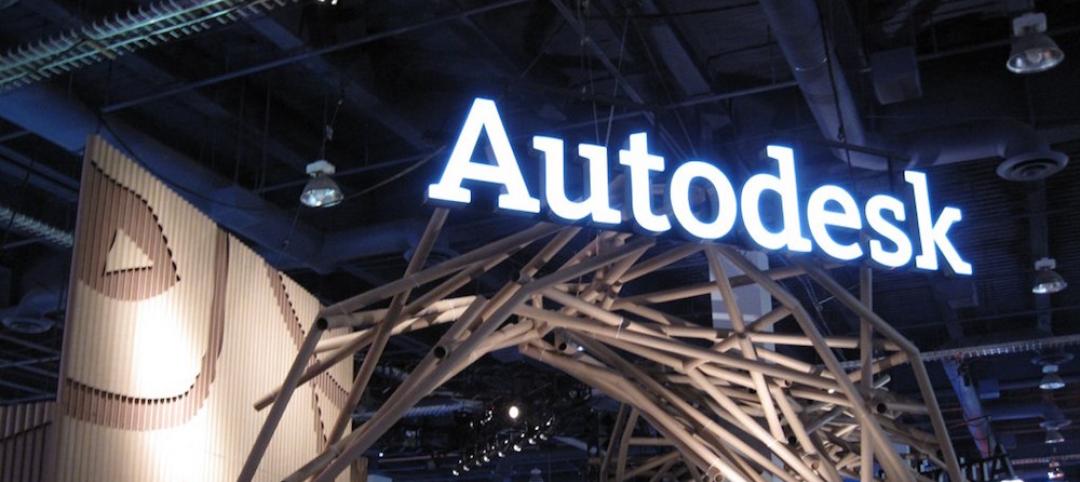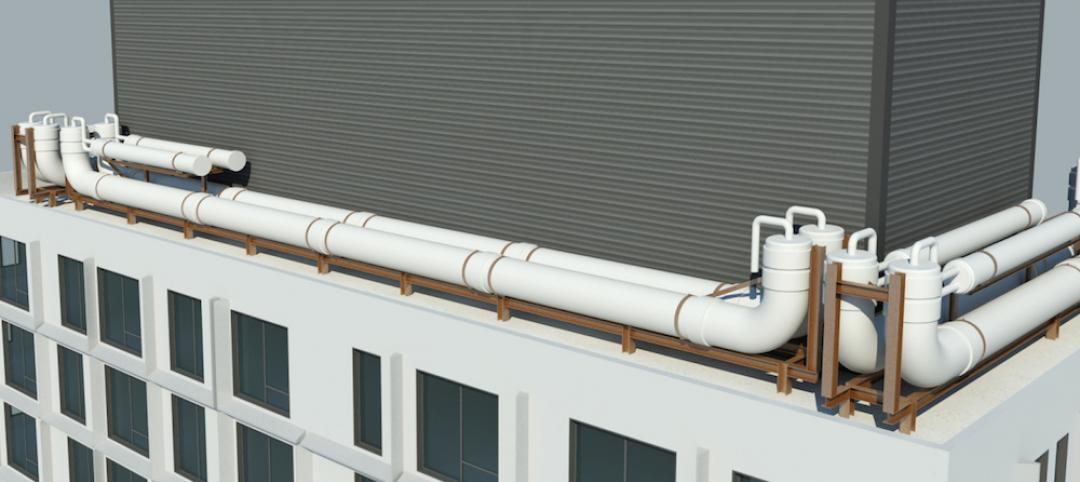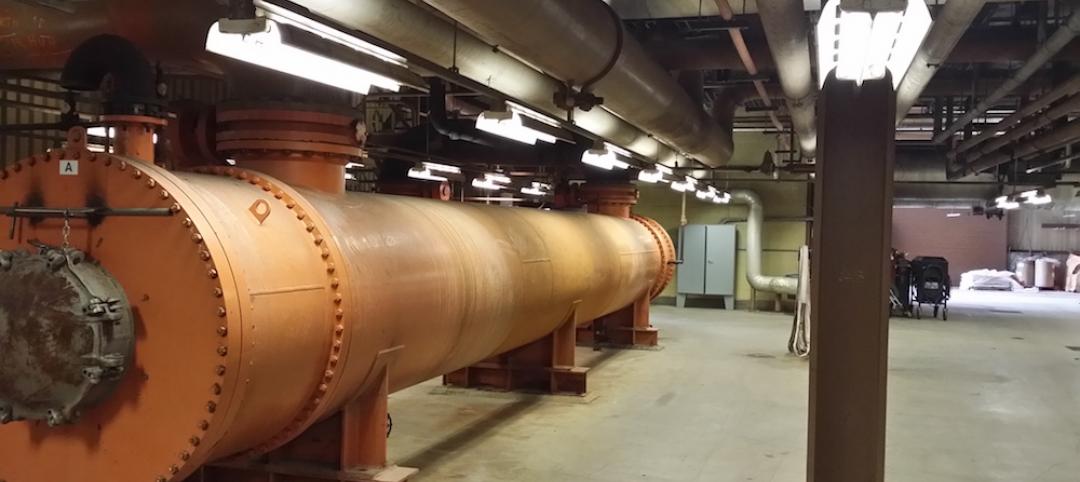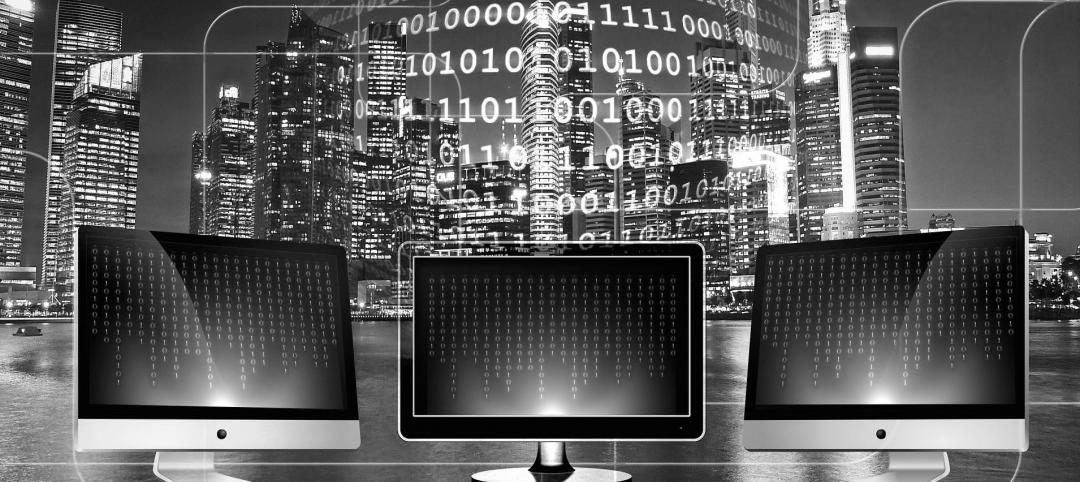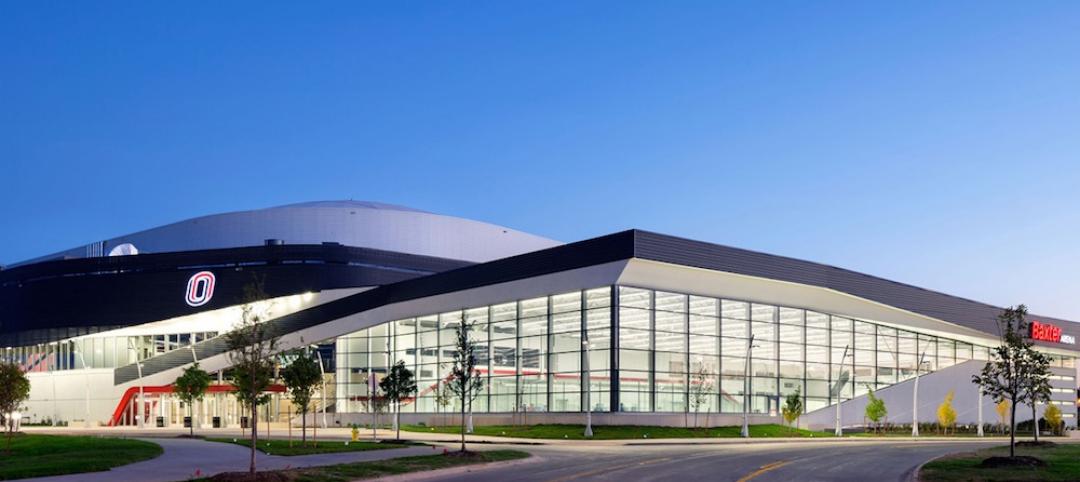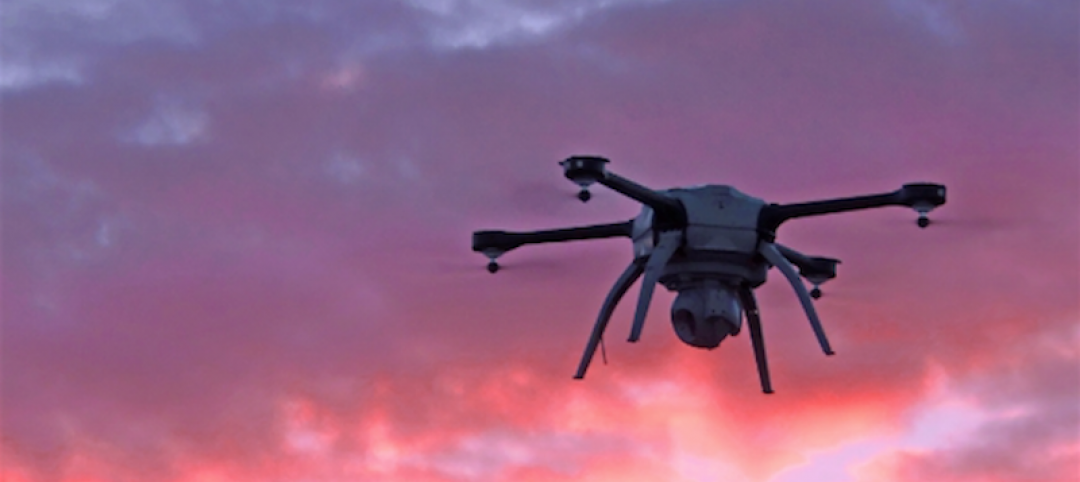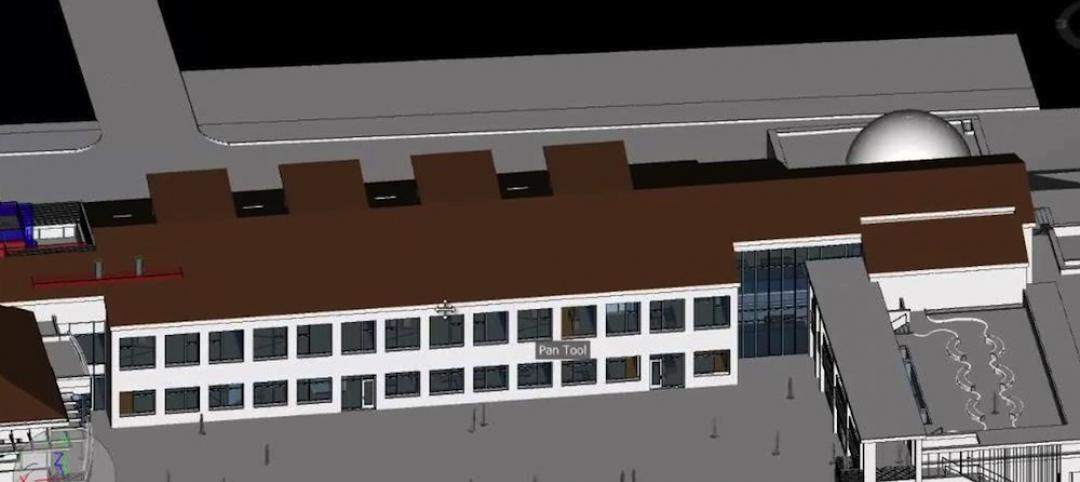The process of converting a digital file into a physical object has been around since the late 1980s, but only in the last few years has 3D printing caught on as a modeling tool in the design and construction industry. AEC firms have expressed high hopes for integrating 3D printing with BIM, laser scanning, and augmented reality—even for manufacturing building components.
“3D printers have completely reinforced our modeling process,” says James Brogan, AIA, Director of Firmware Technology at Kohn Pedersen Fox Associates, whose New York and London offices print up to 250 models a month.
What AEC pioneers of 3D printing recommend:
1. Test the printer’s production speed.
2. Sniff for smells, listen for noise.
3. Check the printer’s reliability and model resolution.
4. Remember, you get what you pay for.
5. Make sure you’ve got the right software.
6. Lease before buying.
7. Outsourcing may be a convenient option.
8. Establish protocols for use of your firm’s 3D printers.
9. Don’t let nitpicking controls stifle creativity.
10. Make sure 3D printing is the right solution for the client and fits your business.
11. Look beyond building models into wider uses of 3D printing.
Early adopters will also tell you that 3D printing hasn’t always lived up to expectations. Brogan says KPF’s earliest 3D machines took forever to make models, only to have the models fall apart.
Building Design+Construction reached out to 3D printing users at AEC firms and industry experts for advice on how to make the technology more productive and useful. Here’s what they told us.
1. Test the printer’s production speed.
KPF’s experience with a slow printer was not unique. VOA Associates’ Chicago studio has been using a $6,500 3D printer that’s “really slow, and can sometimes take days to build a model,” says Susan Heinking, AIA, NCARB, LEED AP O+M, until recently the studio’s Sustainability Leader. (She’s now with Pepper Construction.)
TIP:3D printing technology keeps getting better, and newer, faster machines are coming. But you’ll want to test your model first to see if it’s up to speed for your needs.
2. Sniff for smells, listen for noise.
Some 3D printers can be truly obnoxious. They require the use of fixatives, resins, and post-processing sprays that can stink up your whole office. Heinking, a BD+C 40 Under 40 honoree, says VOA’s printer can be noisy.
TIP: “We made the mistake of not isolating the printer from the rest of the office,” says Heinking. Don’t make the same mistake. You don’t want printer noise or smells disturbing staff, visitors, or—perish the thought—clients.
3. Check the printer’s reliability and model resolution.
Gensler’s Washington, D.C., office bought its first 3D printer for $37,000 a few years back. “There was a lot of excitement,” says Robert Blalolil, a Designer in the model shop. That anticipation quickly dissipated. “It was on the fritz half the time, and the model resolution was not the greatest,” he recalls. Gensler’s D.C. office has since upgraded to a $90,000 object polyjet printer and now prints up to 30 models a month.
TIP: Ask the vendor for documentation on model resolution. As for reliability, that’s tougher to verify. The vendor should provide referrals of recent customers who have purchased the model you’re looking at—so you can make the call.
4. Remember, you get what you pay for.
An entry-level desktop 3D printer that uses a process called filament deposition manufacturing can cost as little as $750. More versatile machines for commercial use can have six-figure price tags. But divining the relationship between cost and value is not always as straightforward as you’d think.
LGM3D (www.lgm3d.com), an architectural model shop in Minturn, Colo., bought its first printer on eBay, for $2,000. It never worked. “It was the largest paperweight we ever purchased,” says Patrick Fleege, Senior Project Manager, still managing to have a chuckle in his voice. LGM3D bought its first powder-based inkjet printer in 2000, and has continued to upgrade its equipment. It now operates eight machines.
At the other end of the scale, you can pay $80,000 for a lemon, as ZGF Architects did for its first 3D printer. Price alone is no guarantee of quality.
TIP: Do your due diligence to find a reliable vendor with workhorse models. MakerBot’s fifth-generation Replicator Desktop 3D printer retails for $2,899. There are dependable desktop 3D models that range in price from $3,000 to $30,000, according to Robert Petty, an Associate Partner who runs ZGF Architects’ model shop. He’s happy with the firm’s new $80,000 powderized machine that prints in full color. You’ve got to spend the time and shop around to find the printer with the right price point and value proposition for your needs.
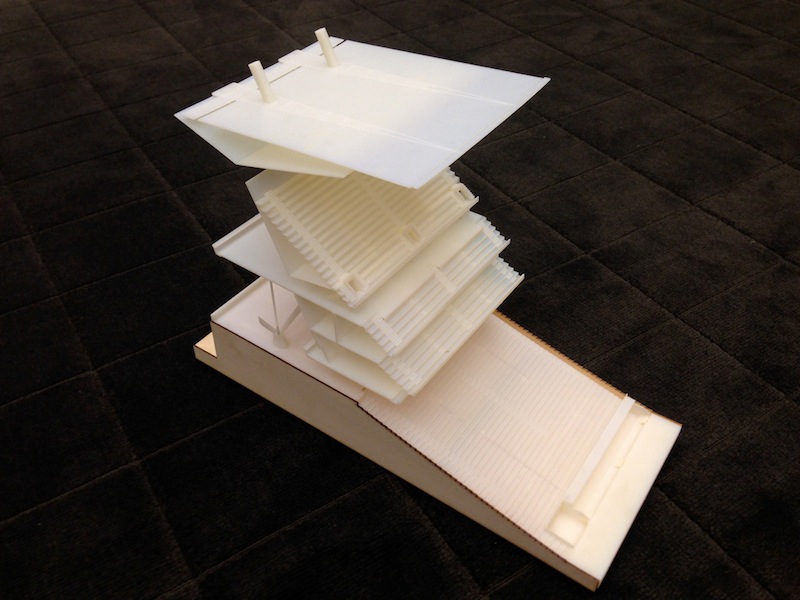 To design the La Rinconada baseball stadium in Caracas, Venezuela, known as Parque Hugo Chavez, Gensler’s team in its Washington, D.C., office used 3D goggles to share how the sight lines would look from every point in the 35,000-seat ballpark. That research informed the 3D models that Gensler printed to develop the different seating levels of the stadium, whose construction is scheduled for completion in 2016. Photo: Gensler
To design the La Rinconada baseball stadium in Caracas, Venezuela, known as Parque Hugo Chavez, Gensler’s team in its Washington, D.C., office used 3D goggles to share how the sight lines would look from every point in the 35,000-seat ballpark. That research informed the 3D models that Gensler printed to develop the different seating levels of the stadium, whose construction is scheduled for completion in 2016. Photo: Gensler
5. Make sure you’ve got the right software.
Three-dimensional printing is not just a matter of machinery. You’ve got to have software brains that work with the printer’s guts. “Whatever you can dream up on the computer, you can build as a model,” says Greg Sherlock, who runs Populous’s model shop. But Populous also had to come up with software that could translate the data its designers were providing into language that the printer understood and that wouldn’t cause printing glitches.
TIP: Follow Populous’s lead: Look at a minimum of four or five different software packages, and test them on several different printer models before making your final choice.
6. Lease before buying.
AEC firms just getting into 3D printing would be wise to start out by leasing equipment from a trusted third-party provider. There are dozens of printer suppliers out there.
For nearly a year, Populous has been able to up its 3D modeling game by leasing a top-of- the-line Epson ProJet 3500 CPXMax printer on a monthly fee basis. KPF has aligned with a graphics company that supplies and maintains its printers; the vendor also recommends upgrades as needed. Leasing, says Brogan, was “really important to us early on” as a way to control costs. KPF pays by the number of models it prints.
TIP: Just as you would in leasing a car, read the fine print on the lease agreement. Better yet, have your lawyer red-flag it.
7. Outsourcing may be a convenient option.
If you prefer not to buy or lease a 3D printer, or if you have a project that requires more sophisticated, larger, or more complicated model-making than your 3D printer can handle, you can outsource the work to any of a host of 3D printing services, such as Shapeways (www.shapeways.com) and Ponoko (www.ponoko.com).
LGM3D recently shipped $2,000 worth of building models to HOK’s office in Atlanta, even though HOK has its own in-house model and printing capability. “We’re selling capacity,” says Charles Overy, LGM3D’s Director/CEO, “and we don’t see professional model making becoming extinct.”
TIP: Do the math. The cost-effectiveness of outsourcing will depend largely on how many models you’d be printing over time. Just make sure to set up internal approval procedures so that you don’t go overboard and get surprised by a nasty bill.
8. Establish protocols for use of your firm’s 3D printers.
Recent architecture graduates are usually quite familiar and comfortable with 3D printing. Don’t be surprised when you hire them that they want to take full advantage of your firm’s gadgets, sometimes to an extreme. “Our younger staffers use 3D printing like a Xerox machine,” says Nick Leahy, AIA, LEED AP, a Principal in Perkins Eastman’s New York office.
TIP: Set up firmwide procedures for determining who gets to print what, and when. At Kohn Pedersen Fox, a project manager must approve any printing job. At VOA, the request has to go to the IT department. Your firm needs to establish similar internal mechanisms to prevent excessive or frivolous printing.
9. Don’t let nitpicking constraints stifle creativity.
On the other hand, you don’t want to be so tight on the use of the 3D printer that you stifle innovation that could come from it. “The magic happens when a designer doesn’t think twice about creating a physical artifact, and then goes back to the digital world to make adjustments,” says Paul Audsley, Associate AIA, Principal, and Director of Digital Practice for NBBJ.
The technology can open up new possibilities. ZGF’s three 3D printers have become great tools for modeling cantilevered work. “They allow us to explore geometries in ways we weren’t able to do before,” says Petty.
TIP: You have to decide if your 3D printer is there just to churn out models on the fast and cheap, or if there should be some room for experimentation and creativity that’s not tied directly to a client invoice. How about setting aside 10–15% of the 3D printing budget (or production time) for wild and crazy ideas? Just keep an eye peeled for abuse.
10. Make sure 3D printing is the right solution for the client and fits your business.
Clients may ask for 3D-printed models, but sometimes all they really want are traditional handmade models. LGM3D’s Overy says the hype has helped his business, “but 3D printing is not always the best way to do things.”
Nor is the technology a good fit at this time for all sectors of the construction industry. “We do more manufacturing and heavy-industry engineering, and are dealing with complicated plans, so 3D printing is still a ways away for us,” says Mike Gwyn, President of Leidos Constructors and SVP of Leidos Engineering.
TIP: Don’t try to push 3D printing where it’s not wanted. Treat the technology as if it were an ungainly teenager. Give it a chance to grow up at its own pace.
11. Look beyond building models into wider uses of 3D printing.
“We’re creating stuff that’s beyond our core capacity,” says LGM3D’s Fleege. The 3D-printing model maker switched to ZCorp’s 510 and 650 Zprinter systems after it started working with SketchUp 3D modeling software.
One forward-looking possibility is the use of 3D printing to manufacture building components. Populous’s Sherlock says he foresees the day when 3D scanners will capture a 360-degree image, move the image into CAD, and then translate the data parametrically to shape the geometry into a 3D object. This could be the first step toward using 3D printing for manufacturing building components, he says.
Gensler’s Los Angeles office is in the second year of a research project to facilitate the printing of larger objects. Tam Tan, an Associate there, says that the research team has already attached a printer to a drone, thereby extending the printer’s X and Y coordinates and making them virtually “boundless,” according to Tan. Thus far, the Gensler team has succeeded in using a printer in flight to print concrete forms onto a sheet of plywood, so the project has a long way to go before any practical application arises from it.
TIP: Start dreaming, and ask yourself: How far can I take this exciting technology?
Related Stories
BIM and Information Technology | Jun 7, 2016
Conquer computational design: 5 tips for starting your journey
Data-driven design expert Nathan Miller offers helpful advice for getting your firm ready to use CD tools and concepts.
BIM and Information Technology | Jun 7, 2016
6 ways smart AEC firms are using computational design methods
Rapid prototyping, custom plug-ins, and data dashboards are among the common applications for computational design.
BIM and Information Technology | May 20, 2016
AIA and Autodesk introduce new feature to automate 2030 Commitment reporting data
The new automated connection will allow the more than 350 AIA 2030 committed firms to report their project and portfolio performance to the DDx directly from Autodesk Insight 360.
AEC Tech | May 10, 2016
Thornton Tomasetti launches new tech company
TTWiiN initially features six products and will add more via its own incubator.
Sponsored | BIM and Information Technology | May 10, 2016
Advanced laser scanning technology supports data collection and modeling efforts for Missouri’s Iatan 1 Power Plant
For the installation of a new heat exchanger, the power division of Black & Veatch contracted an engineering firm to laser scan the site, make a piping model in Autodesk® Revit®, and export it into AutoCAD® to deliver results.
AEC Tech | May 9, 2016
Is the nation’s grand tech boom really an innovation funk?
Despite popular belief, the country is not in a great age of technological and digital innovation, at least when compared to the last great innovation era (1870-1970).
Big Data | May 5, 2016
Demand for data integration technologies for buildings is expected to soar over the next decade
A Navigant Research report takes a deeper dive to examine where demand will be strongest by region and building type.
BIM and Information Technology | May 2, 2016
How HDR used computational design tools to create Omaha's UNO Baxter Arena
Three years after writing a white paper about designing an arena for the University of Nebraska Omaha, HDR's Matt Goldsberry says it's time to cherry-pick the best problem-solving workflows.
Drones | Apr 25, 2016
The Tremco SkyBEAM UAV is the first to be approved by the FAA for nighttime commercial operation
The SkyBEAM UAV is used for identifying energy leaks, rooftop damage, deteriorating façades, and safety issues without requiring scaffolding or cranes.
BIM and Information Technology | Apr 21, 2016
U.K. imposes BIM requirement on government projects
U.S. unlikely to follow suit.


